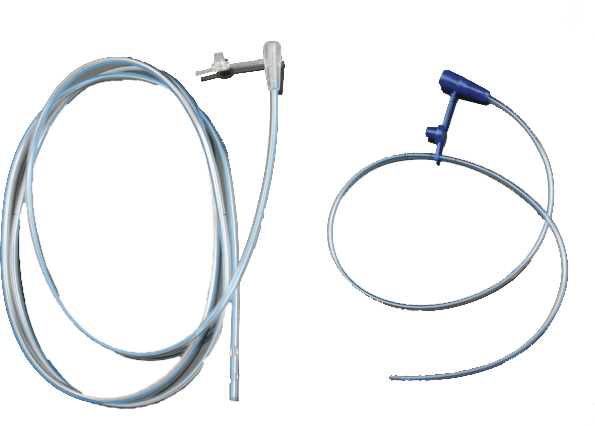
Feeding tube
Feeding tubes are used to supply nutrients to people who cannot get enough nutrition through eating. A flexible tube is inserted through the nose or belly and guided down the throat until it reaches the stomach.
Infant Size: 4, 5, 6, 7, 8, Fr/Ch.
Adult Size: 10, 12, 14, 16, 18, 20, 22Fr/Ch.
| Item No.: | Size: | Length: |
|---|---|---|
| NMD301 | Infant | 40 CM |
| NMD301 | Adult | 120 CM |
There are many different types of feeding tubes that can be used for enteral nutrition. The type of feeding tube that is best for you will depend on your individual needs and medical condition. Some common types of feeding tubes include:
-Nasogastric (NG) tube: A nasogastric tube is a long, thin tube that is inserted through the nose and down the throat into the stomach. NG tubes are typically used for short-term feedings or for patients who cannot tolerate oral feedings.
Gastrostomy (G-tube): A gastrostomy tube is a tube that is inserted through the abdominal wall and directly into the stomach. G-tubes are typically used for long-term feedings or for patients who cannot tolerate nasogastric tubes.
-Jejunostomy (J-tube): A jejunostomy tube is a tube that is inserted through the abdominal wall and directly into the small intestine. J-tubes are typically used for patients who have had surgery to remove part of their stomach or intestines.
A feeding tube is a medical device that is used to provide nutrition to people who cannot eat or drink on their own. Feeding tubes are most commonly used for people who are unable to swallow, have difficulty digesting food, or are at risk for aspiration (inhaling food or liquids into the lungs). Feeding tubes are inserted through the nose or mouth, and go down the esophagus (the tube that connects the throat to the stomach). There are different types of feeding tubes, which include: gastrostomy tubes (G-tubes), jejunostomy tubes (J-tubes), and nasogastric tubes (NG-tubes). G-tubes and J-tubes are placed directly into the stomach, while NG-tubes go through the nose and down into the stomach. Feeding tubes can be used for short-term or long-term nutrition needs. Short-term feeding tubes are typically used after surgery, while long-term feeding tubes are used for chronic conditions such as dementia, ALS, cerebral palsy, and cancer. Feeding tubes provide a way to get nutrients into the body when eating and drinking is not possible. They can be used to give calories, protein, fat, vitamins, minerals, and fluids. Nutrition through a feeding tube is called enteral nutrition.
Feeding tubes are typically used for a short period of time, anywhere from a few days to a few weeks. In some cases, they may be needed for longer periods of time. If you have been recommended to use a feeding tube, it is important to follow your doctor’s instructions on how long to use it. You should also make sure to clean and care for your feeding tube as directed.
A feeding tube is a small, flexible tube that is inserted through the nose or mouth and down into the stomach. A feeding tube is used when someone is unable to eat or drink by mouth. A feeding tube can also be used to give medicine or other liquids. Possible complications with a feeding tube include:
-infection
-nosebleeds
-stomach cramps
-vomiting
-choking
-aspiration